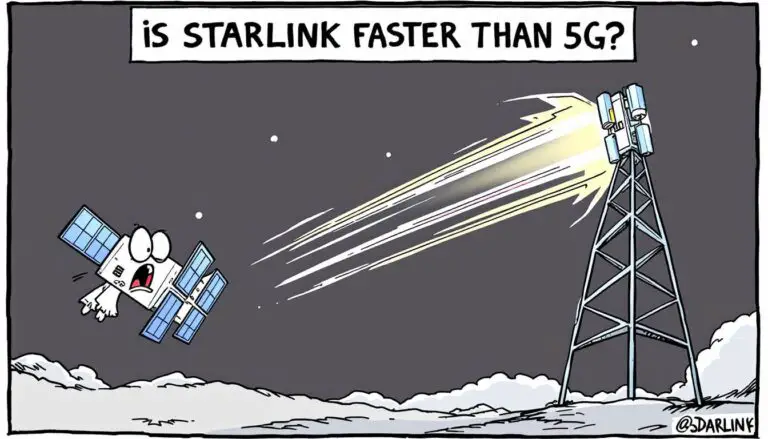Why does my Xfinity WiFi keep disconnecting? – Xfinity disconnect issues are common due to outages, hardware problems, interference, and network congestion.
This guide provides a clear approach to diagnosing and fixing the problem if your Xfinity WiFi is frequently disconnecting. We will cover the primary causes and offer practical solutions to help restore your connection.
Quick Fixes (Short Answer)
- Open the Xfinity app and check the Status Center for outages; you can also text OUT to 266278 for updates.
- Restart your gateway from the Xfinity app or power cycle your modem/router (unplug 30–60 seconds, then plug back in).
- Test with Ethernet directly from the gateway to rule out Wi‑Fi issues.
- Try another band: 5 GHz for speed; if you have an XB8 (Wi‑Fi 6E), use 6 GHz for nearby devices.
- Enable Admin Tool access in the Xfinity app, then visit http://10.0.0.1 to check settings (username: admin; password: printed on your gateway label).
Key Takeaways – Summary
- 🛠️ Common causes of Xfinity Wifi disconnections include service outages, signal interference, loose connections, outdated router firmware, improper router placement, overheating, and network congestion.
- 🔧 Troubleshooting methods include checking router lights, service outages, disconnecting extra devices, reconnecting devices to the network, inspecting cable connections, updating router firmware, power cycling, and adjusting router placement.
- 🧹 Regular cleaning of the router and checking for interference from other devices can also help.
- ⚙️ Advanced troubleshooting steps include changing the DNS server, altering the wireless mode or channel, examining log files, disabling conflicting apps, and pausing auto-updates and downloads.
- 📞 If problems persist, contacting Xfinity customer support or considering a router replacement might be necessary.
Why Does My Xfinity WiFi Keep Disconnecting?
There are three primary culprits when your Xfinity WiFi connectivity falters:
- ISP Outages – Sometimes, the issue is on Xfinity’s end, with an outage impacting service in your area.
- Connectivity Issues – Loose cables, interference from other devices, outdated hardware, or poor router placement can break connections.
- Overload on Bandwidth – Too many connected devices using data can bog down your available bandwidth and kick devices offline.
Below, we dive deeper into these issues and how to address them. Follow the steps to methodically troubleshoot and narrow down what’s behind your Xfinity drops.
Step 1: Check for Xfinity Outages
It’s always good to first check whether there are any known service outages with Xfinity that could explain the problem. You can quickly verify this:
- Via the Xfinity app – Open the Xfinity app and go to the Status Center to see any active outages in your location.
- Visit Xfinity Outage Map – Head to Xfinity’s outage map website and enter your zip code. It highlights any ongoing large-scale outage areas.
- Text updates – Text OUT to 266278 (COMCST) to check for interruptions and get restoration updates.
- Call Customer Support – Call 1-800-XFINITY and speak with a support agent. They can see if there are unpublicized outages affecting your connectivity.
- Check Xfinity Subreddit – The Xfinity subreddit often features users reporting area outages. See if others are noting issues in your region.
- Wait Until Outage Resolved – If there is indeed an outage for your neighborhood, you need to remain patient until Xfinity fully resolves it. ISP-wide outages are generally remedied within several hours.
Step 2: Reboot Your Hardware
Restarting your hardware often clears temporary glitches that cause drops.
If you rent an Xfinity gateway:
- Use the Xfinity app to Restart your gateway from the Device details screen, or unplug it for 30–60 seconds and plug it back in.
- Wait for lights to stabilize, then retest your Wi‑Fi.
If you use your own modem/router:
- Unplug the modem and router for 30–60 seconds, plug the modem in first, wait until it is online, then power the router.
- Reconnect devices and confirm stability.
See also : How to Restart or Reset Xfinity Router – A Complete Step-by-Step Guide
Step 3: Inspect All Connections & Cables
A simple wiring or physical connectivity issue is another prevalent culprit for sketchy WiFi. Carefully inspect the following to ensure no apparent flaws:
Coaxial Cable (RG6)
The thick coaxial cable that connects your Xfinity modem/gateway to a wall outlet can get loose and cause drops.
- Ensure tight connections at the wall and gateway.
- Avoid sharp bends near connectors; check for cracks or fraying.
- Replace damaged runs with quality RG6.
Ethernet Cables
These connect your gateway to routers or wired devices.
- Check for a snug fit and visible damage or crimps.
- Use Cat5e or higher; swap questionable cables.
Tighten Any Loose Ports – Check all cable connections and tighten if any wiggle room. Bad plug fits can disconnect temporarily when bumped or moved.
Test With Direct Connection – Plug your computer directly into the Xfinity modem/gateway Ethernet port bypassing WiFi. If hardwired is stable, the issue likely lies with the router or wireless signal.
See also: https://afrozahmad.com/blog/arris-modem-lights/
Step 4: Check for Interference
Have other electronics or appliances that emit radio frequencies been moved near your modem/router setup recently? Signals from these devices can interfere with WiFi connectivity:
- Microwaves
- Cordless phones
- Bluetooth speakers/headphones
- Wireless game controllers
- Baby monitors
- Neighbors’ WiFi networks
Isolate Source – Turn off potential culprits one by one to see if connectivity improves.
Alter Device Location – Relocate interfering equipment farther from the modem/router. Even a few feet can help.
Switch Bands & Channels – Connect to 5 GHz for speed; use channels 149+ if available. On 2.4 GHz, stick to channels 1/6/11. If you have an XB8 (Wi‑Fi 6E), try the 6 GHz band for nearby devices. Note that xFi Pods extend only 2.4/5 GHz, not 6 GHz.
See also: Guide: How to Separate 2.4 and 5GHz on Xfinity Routers or Modems
Step 5: Update Router Firmware
Your router or gateway firmware controls networking functions. Outdated firmware can cause drops or instability.
If you rent an Xfinity gateway:
- Automatic updates – Firmware updates are pushed automatically during maintenance windows. Manual flashing isn’t available.
- Admin Tool access change (2025) – Access to http://10.0.0.1 is disabled by default. Open the Xfinity app > WiFi > View WiFi equipment > Advanced settings > Admin Tool online access > Allow. Then visit 10.0.0.1 from your home network. Username: admin; Password: printed on the gateway label.
If you use your own router/modem:
- Check the vendor app/admin page for updates and apply them. For standalone cable modems, firmware is generally provided by the ISP and updates automatically.
- After updates, reboot and test stability.
Determine firmware version – On Xfinity gateways, enable Admin Tool access in the app first, then check version at http://10.0.0.1. For third‑party routers, use the vendor’s admin interface.
Step 6: Adjust Router Location
Inadequate WiFi coverage in parts of your home can manifest as frequent disconnects on wireless devices. Checks:
- Is router centrally positioned? Corner or far room limits range
- Place router high up, avoiding floors
- Move router away from walls/metal that block signals
- Fewer obstructions between router & problem device
- Consider WiFi range extender or mesh if areas still lack signal; note that xFi Pods extend only 2.4/5 GHz (not 6 GHz)
Experiment by temporarily relocating hardware setup while monitoring connection stability. Aim for a consistently strong signal (around -60 dBm or better) for all devices.
Step 7: Contact Xfinity for Additional Support
After working through the steps above, Xfinity tech experts can provide further tailored assistance:
Via Phone – Call 800-XFINITY (800-934-6489) 24/7 to speak with support who can run diagnostics.
Chat Online – Start online chat at Xfinity support site to message a technician directly regarding the issue.
Request Technician Visit – If self-help and remote support do not resolve the problem, Xfinity can send a field technician. Charges may apply depending on your plan and whether the issue is inside or outside your home wiring.
Technicians bring specialized diagnostic tools to pinpoint difficult issues and perform wiring repairs as needed. For extra resiliency during outages, consider Storm‑Ready WiFi (LTE backup with a 4‑hour battery).
See also: How to Cancel Xfinity Services (Internet, TV & Phone)
Conclusion
Following these logical troubleshooting sequences will help narrow down the root cause and restore smooth, resilient Xfinity WiFi functionality across all your household devices. If you’re on an older plan, check whether you can switch to newer options with unlimited data to rule out plan-related confusion about slowdowns.
Frequently Asked Questions
What is the most common cause of constant Xfinity WiFi disconnects?
The most prevalent triggers for recurrent disconnects are loose coaxial cables, outdated firmware on routers or gateways, bandwidth overload from many active devices, and radio interference from nearby electronics.
Why does my internet keep going out every few minutes?
If your internet disconnects in short bursts rather than dropping fully, the likely culprit is radio interference periodically disrupting the signal. Isolate sources, adjust placement, and try different bands/channels (5 GHz or 6 GHz on XB8).
How can I boost my Xfinity WiFi signal strength?
Reposition your router centrally and higher, reduce obstructions, use 5 GHz or 6 GHz where available, update firmware, or add a mesh system. If you use xFi Pods, remember they extend only 2.4/5 GHz.
Why can’t I access 10.0.0.1 on my Xfinity gateway?
As of 2025, Admin Tool access is disabled by default. In the Xfinity app go to WiFi > View WiFi equipment > Advanced settings > Admin Tool online access, toggle to Allow, then sign in at http://10.0.0.1 with username admin and the password printed on the gateway label.
- MikroTik CRS305-1G-4S+ Review: The Ultimate Budget SFP+ Switch Guide - December 25, 2025
- 10 Best Network Switches for Home Networks in 2026 (Top Picks) - December 24, 2025
- 7 Best Budget Routers For Small Business Networks (Under $200) - December 22, 2025




